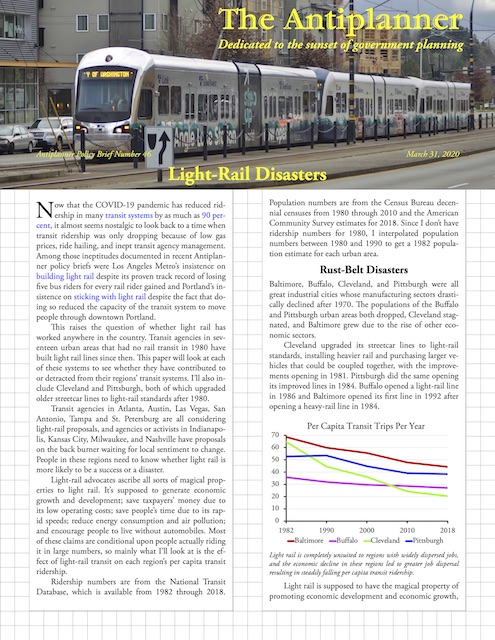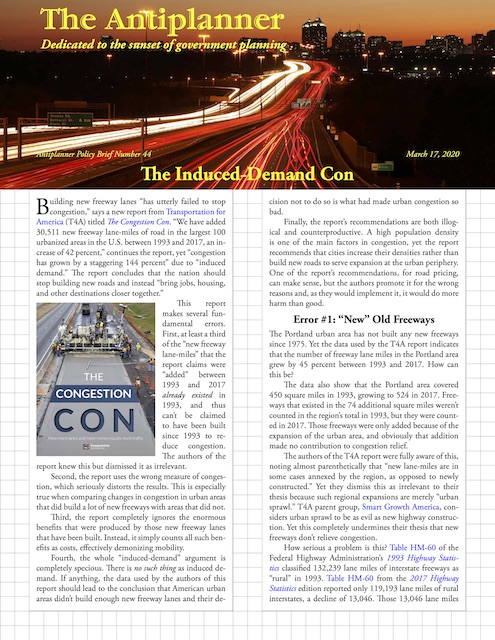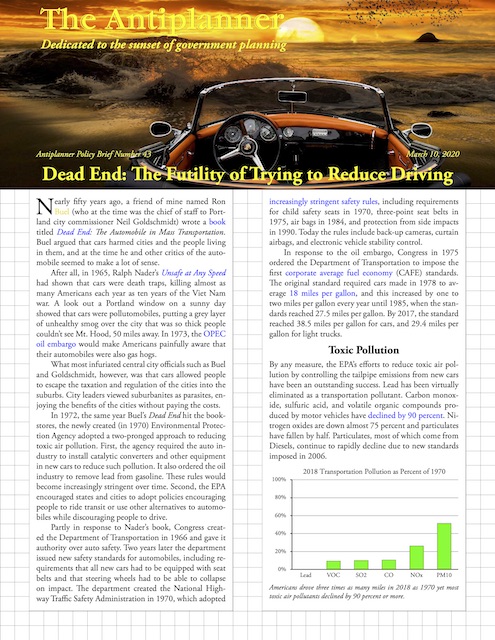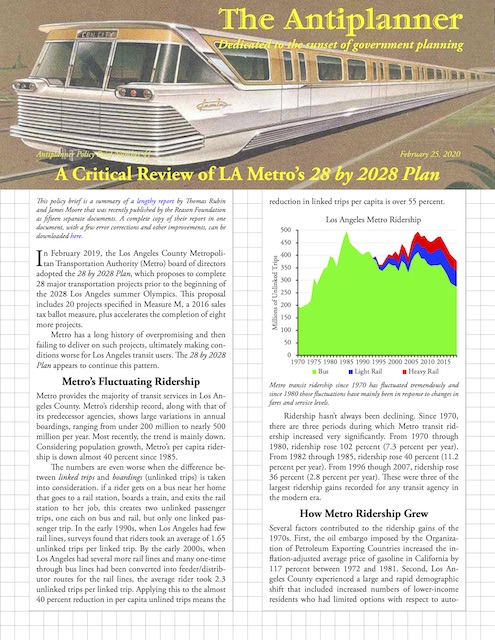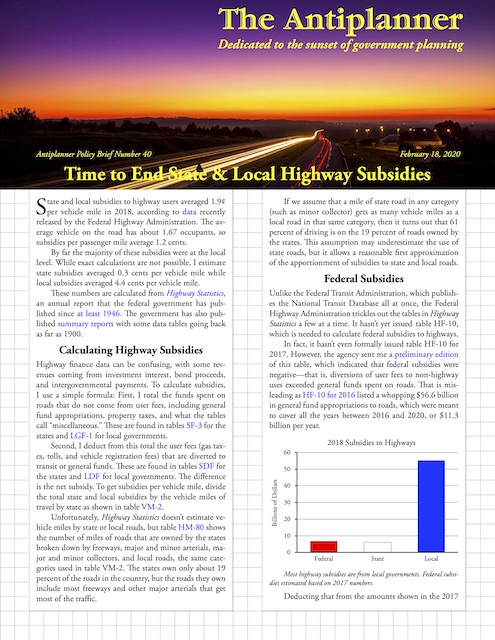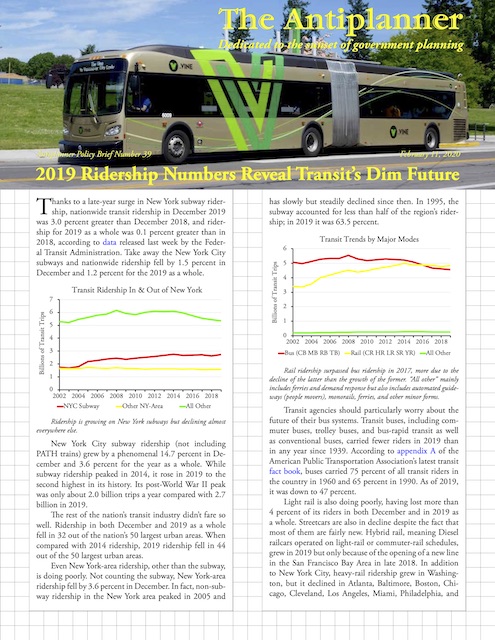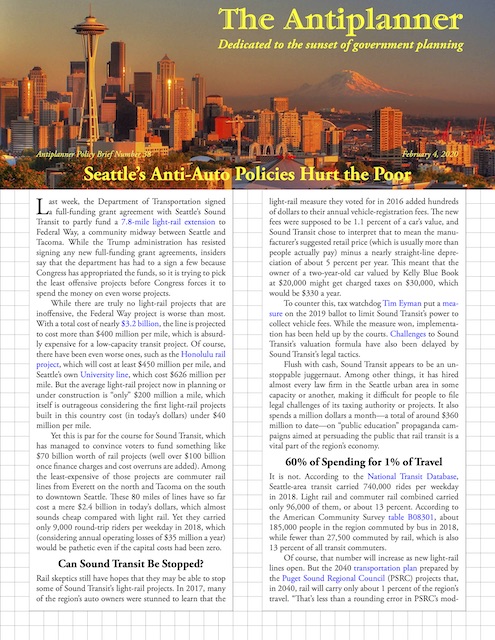2001: Terrorists fly commercial airliners into the World Trade Center and Pentagon, leading to–among many other things–the shutdown of commercial air service in the United States for several days.
2005: Hurricanes Katrina and Rita slam into the Gulf Coast, leading some 4 million people to evacuate their homes and causing hundreds of deaths and severe hardships for thousands of people who were unable to evacuate.
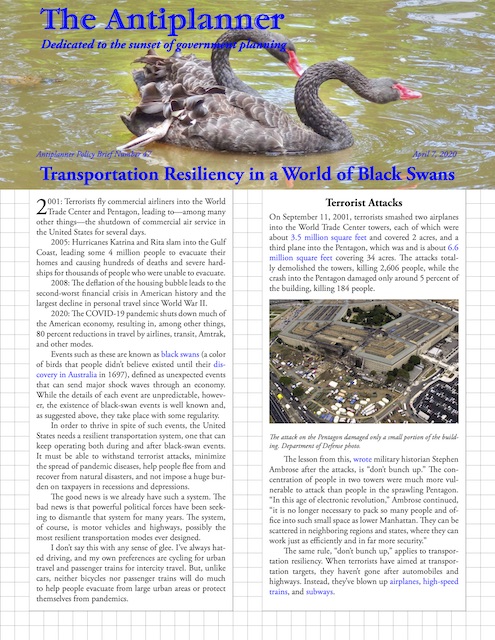 Click image to download a four-page PDF of this policy brief.
Click image to download a four-page PDF of this policy brief.
2008: The deflation of the housing bubble leads to the second-worst financial crisis in American history and the largest decline in personal travel since World War II.
2020: The COVID-19 pandemic shuts down much of the American economy, resulting in, among other things, 80 percent reductions in travel by airlines, transit, Amtrak, and other modes. Continue reading

